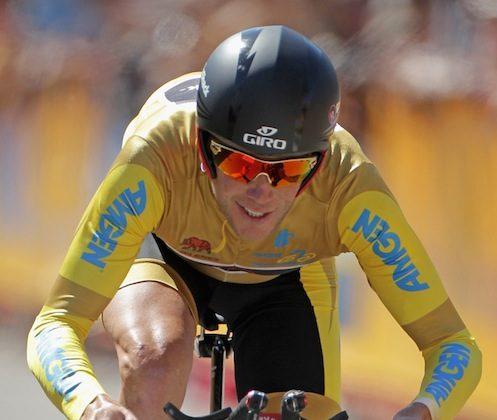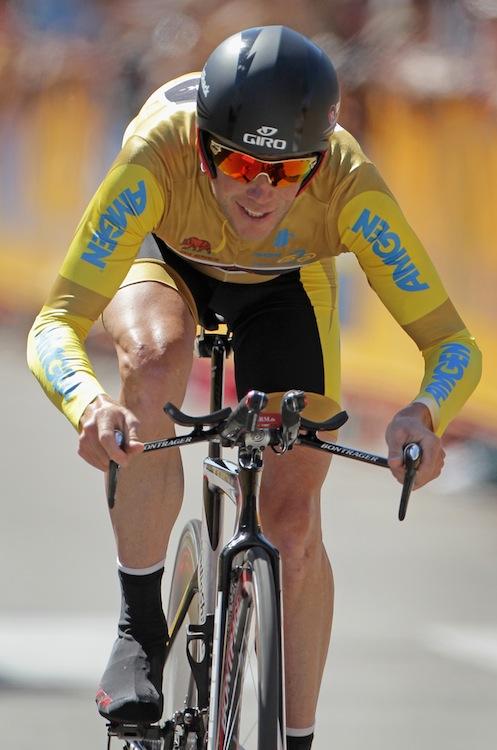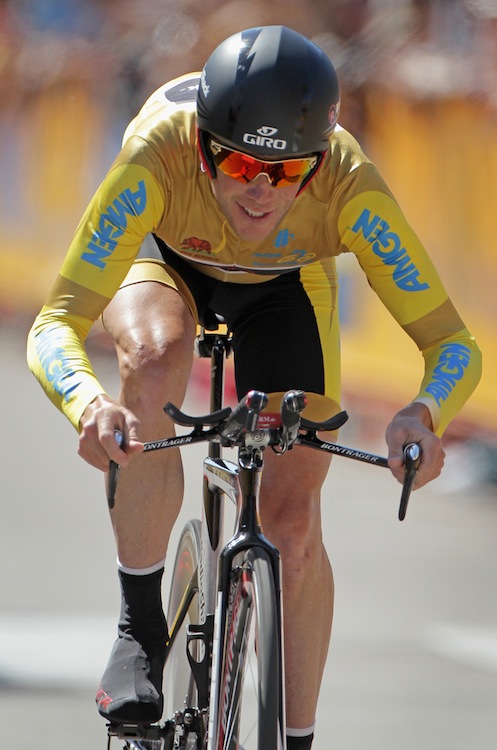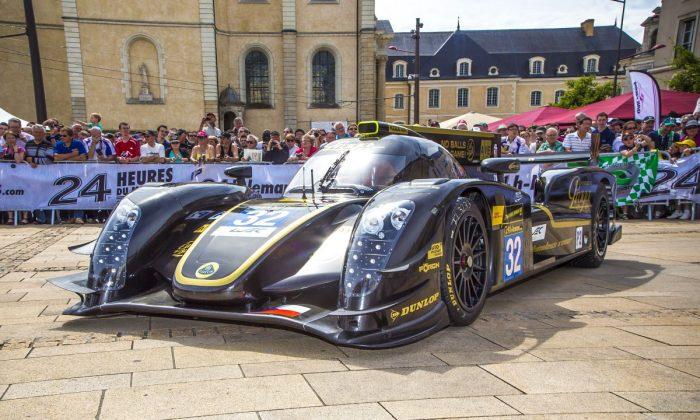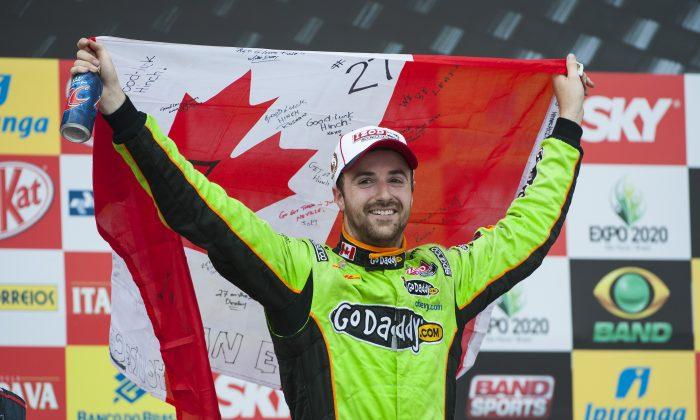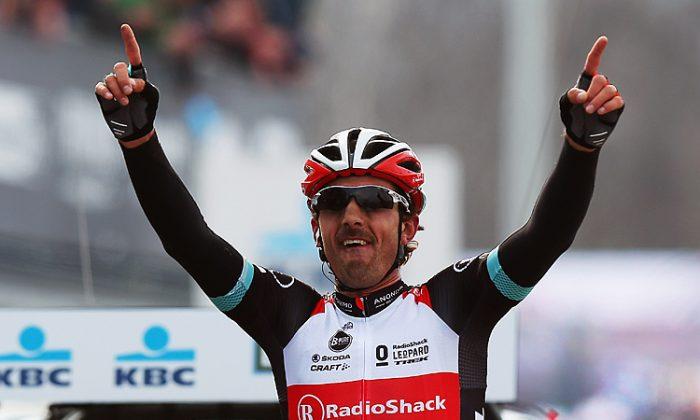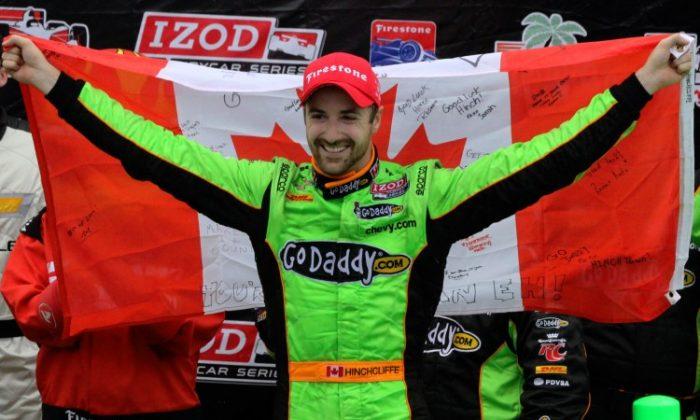Katusha’s Joaquin Rodriguez launched an attack in the final kilometer of the hilly Stage Six of the Tirreno-Adriatico cycling race, beating the General Classification contenders over the line for the ten-second time bonus and the stage win.
The time bonus won’t matter to Rodriguez, who is seventh in GC, 50 seconds out of first. It mattered very much to Liquigas’s Vincenzo Nibali; Nibali used up his teammate peter Sagan completely in an attempt to catch the various attacks in the final five kilometers, and then burned out his own legs chasing Rodriguez. The win and the ten second time bonus might have given Nibali the leader’s blue jersey; instead the Liquigas rider finished second, earning six seconds and trailing race leader Chris Horner by that same margin.
It was close though; in fact, the top ten riders were so close at the line that they all got the same finishing time. A few more meters and Nibali might have earned the Maglia Azzurra. As it is, if he used too much energy in the final five kilometers, he might suffer in tomorrow’s time trial, which will decide the stage.
After the race Rodriguez told Eurosport.com, “I had good luck today. I finally decided to have a go after making the team work right up until the last kilometers. Great work by the likes of [teammate Daniel] Moreno. Of course I tried to get through and I had the power to hold on—it was a long, long, long last kilometer, and I am glad I held on.”
The Spanish racer, riding for a Russian team, later told Cyclingnews.com, “I’m very happy with today’s victory. In the last two stages I was a little disappointed: they were good courses for me but I couldn’t win, because my rivals were in a better shape.
“Today in theory was a better stage for Oscar Freire, more suitable to his characteristics, but when I saw he was not ahead I tried to win. My only chance was to anticipate the sprint and attack from far out, because in the bunch there was Peter Sagan and I couldn’t compete with him in a sprint.
“It was an important victory: now I’m more persuaded that the work we did between Tour of Oman and Tirreno-Adriatico was good. I proved I’m getting better and better and for Vuelta al Pais Vasco I'll be ready to take some other good results.”
Before Stage Six started, Philippe Gilbert, Matt Goos and Edvald Boasson Hagen all withdrew from the race. Mark Cavendish got into an early breakaway, had some fun, and retired after it was shut down. They are all off to prepare for the big Milan-San Remo Classic; they had no chance to win another stage in the Tirreno, and didn’t want to waste their legs.
A Doomed Escape
Stage Six was a lumpy 84 km loop around the city of Offida, with six hilly 16.2 km laps within the city to finish. There was only one really painful climb, 2.5 km at seven percent (with ten-percent ramps)—a perfect stage for a breakaway to stay away and take the win.
A group of seven riders had exactly that idea. Carlos Betancur (Acqua & Sapone), Luis Laverde (Colombia-Coldeportes) Arthur Vichot (FDJ-BigMat), Andrey Amador and Branislau Samoilau (Movistar), Serge Pauwels (Omega Pharma-Quick Step) and Mirko Selvaggi (Vacansoleil) set out after the first break of the day had been caught.
These seven riders...
These seven riders worked hard, but never opened a big gap. Normally a group of riders like this, no threat to GC, would be ignored, but Vincenzo Nibali wanted to win the stage and the bonus seconds.
Liquigas did a lot of the driving, keeping the gap below four minutes, and cutting it to 1:30 at 30 km from the finish. Laverde and Samoilau were the first to drop off; Selvaggi was next. With 20 km to go the lead group was down to four and the gap was down to 53 seconds.
At 15 km Katusha came to the front; with Freire, Moreno and Rodriguez all possible stage winners, the Russian squad decided to help the chase. The breakaway riders knew the game was up but kept working, and shedding riders, until finally Pauwels and Betancur were caught with 5.2 km to go.
Acqua & Sapone’s Stefano Garzelli led the way, with teammate Danilo Di Luca and Liquigas’s Peter Sagan right behind. The pace was very high, no one wanted an attack to succeed, unless it was their attack.
Movistar was the first team to try, but Vincenzo Nibali immediately covered the move. The Di Luca and Colnago’s Domenico Pozzovivo took a shot, only to be ridden down by Lampre’s Michele Scarponi. Di Luca and Scarponi made their own attack next, and opened a small gap, but a small group of very fast riders—all hoping for either a stage or GC win—pursued and caught the Italian pair.
With 2.9 to go Ag2R’s Christophe Riblon attacked. Then, 400 meters later Pozzovivo chased and caught Riblon and set off on his own. Peter Sagan, at the head of the small chasing group, really turned up the wick and dragged the attackers back just before the one-kilometer banner.
Rodriguez launched his assault right after the banner, and again Sagan tried to drive the pursuit. When his legs failed, Nibali took over, but was just too late; the Liquigas rider finished a bike-length behind.
RadioShack’s Chris Horner finished fourth, keeping the Maglia Azzurra; Roman Kreuziger crossed seventh, keeping second place by one second.
Time Trial Will Decide
The final, flat 9.4 km time trial will decide Tirreno-Adriatico. The top three in GC: Horner, Kreuziger, and Nibali, are the only three with a real chance to win, barring rain or mechanicals. The fourth-placed rider, Ag2R’s Rinaldo Nocentini, is 45 seconds back, and the top three can ride time trials.
The flat terrain suits the first two; if there was a hill or even an uphill time trial as was in Paris-Nice this year, Nibali might have the edge, but on the flat it will be a straight fight between Horner and Kreuziger.
Race leader Chris Horner, coming back from an eight-month layoff after a bad crash in the Tour de France and a pulmonary embolism, was confidant of his abilities. “Very difficult time trial, very important time trial—we hope to take the win and fly back as the winner and the first American winner of Tirreno-Adriatico,” he told Eurosport.
Horner told Eurosport that Kreuziger was the greater threat. “Nibali was very strong today but Kreuziger is a very good time trialer. Myself too—we are both very good. My legs are on good form now. I normally can win time trials sometimes when I have good form, and I have good form now so—I go for the win.”
